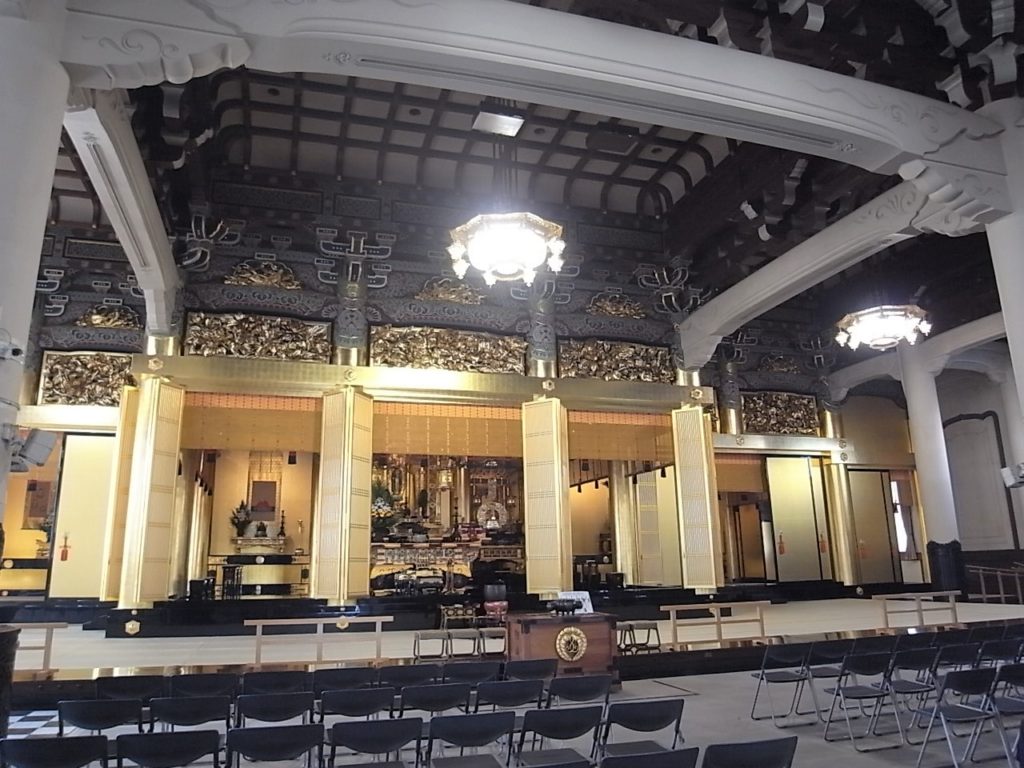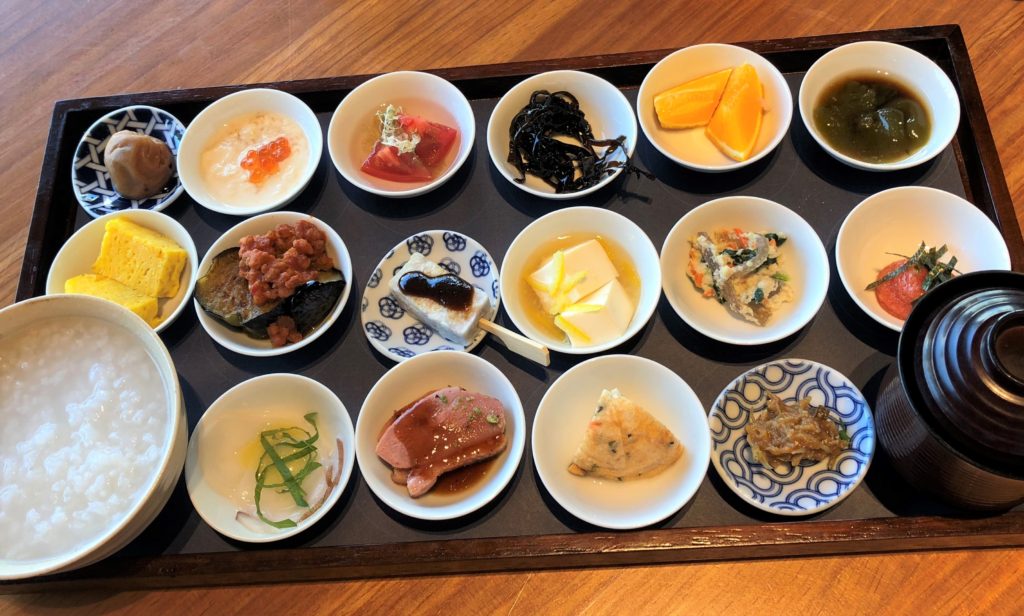Tsukiji Hongwanji – Best to visit in the morning!

Tsukiji Hongwanji is a Buddhist temple located nearby Tsukiji Market wthin the walking distance from Ginza, Tokyo, Japan. It is a prominent temple which celebrated its 400-year anniversary in 2017. If you are staying in Ginza / Tsukiji area during your Tokyo sightseeing, you definitely want to start one of your days in Tokyo at the Tsukiji Hongwanji.
What is Tsukiji Hongwanji?
Tsukiji Hongwanji is a branch temple of the Jodo Shinshu Hongwanji-ha denomination, the Mother Temple of which, Nishi Hongwanji, is in Kyoto.
At first sight, it seems like a foreign facility and no wonder. The current Main Hall, which had been established in 1934, is with ancient Indian Buddhist style. This beautiful architecture designed by Dr. Chuta Ito, Professor of the faculty of Architecture at Tokyo University. It is said that he had sought the inspiration from the birthplace of Buddhism, India.
Discover! Tsukiji Hongwanji 2015.06 | Chuo City Office
Commentary on architecture of Tsukiji Hongwanji by Kazunari Masuyama, Chief Survey Instructor for Cultural Properties in Chuo City Office
*Japanese only
“Nenbutsu Dojo” – Morning worship service
The best timing to visit Tsukiji Hongwanji is in the morning. The reason is the Morning worship service held at the Main Hall in every morning.

Tsukiji Hongwanji is also called “Nenbutsu dojo”. “Nenbutsu” means a Buddhist chant, and “Dojo” means the place like a training hall in Japanese. Tsukiji Hongwanji is the place where the people chant a prayer to “Amida” Buddha togather.
Morning worship service starts at 7:00 am every day. Anybody and everybody can participate with no charge, and is free to come and go any time during the chant. Nonetheless you would love to be right on time to see the huge gong rings and the Buddhist priests come in. It has a solemn and mysterious atmosphere.
“18-dishes breakfast” at the cafe
There is one more reason that brings you to Tsukiji Hongwanji in the morning. The special morning dishes are served only at the morning hours at the café inside the temple grounds. Tsukiji Hongwanji built a brand new facility “Information Center” as commemoration of its 400th anniversary in 2017. The cafe “Tsukiji Hongwanji Cafe Tsumugi” is at the first floor in this center.

What you want to order is “18-dishes breakfast” (1,800 yen + tax). The number “18” comes from the Buddhist concept. The 18th vow out of 48 fundamental vows of Amida Budda is to aim people just to believe in Amida Budda. Amida Budda is the principal image of Tsukiji Hongwanji.

Rice porridge, miso soup, and 16 kinds of side dishes are served together as a set. In addition, delicious Japanese tea comes together. Rice porridge and hot water of tea have free refill.
This special breakfast is served from 8:00am to 11:00am (last order 10:30). You are highly recommended to check in at 8:00am so that you can have the table by the window with fantastic Main Hall view without waiting in line!

More spots to see
The stained glass on the entrance door of Main Hall. It is like a door to the heaven!

The statue of Shinran Shonin, the founder of Jodo Shinshu.
 Photo: JULIE
Photo: JULIE
Tsukiji Hongwanji Bon Dance Festival

At Tsukiji Hongwanji, a grand bon odori (bon danace) festival known as “the most tasty bon dance festival” is held in every early August. It was visited by approximately 70,000 people in 2017.
Why “the most tasty” ? It is because the open-air stalls of well known shops around Tsukiji market. You can enjoy dishes such as grilled squid, thick omelet, simmered beef giblets, Yakitori etc. The authentic cuisine will make you smack your lips!
During the festival the men are performing wadaiko on the central raised platform “Yagura” and people dance around the Yagura. You can also join the bon dance by following the model bon dancers in the center of the circle. Bon dance is simple and easy to learn.
*Revised in 3 Aug, 2018
1 – 4 August, 2018
19:00~21:00 *Only 4 August: 18:00~20:30
*3 August: costume contest will be held
History of Tsukiji Hongwanji

Originally, Tsukiji Hongwanji was built in Asakusa in 1617 as a branch temple of Nishi Hongwanji (Kyoto), known as “Edo Asakusa Mido”. It was destroyed by fire in 1657 during Edo era, and moved to the present location. At that time the land was under the sea, which had to be reclaimed. It was said that reclamation and reconstruction project was undertaken by devout followers. It is a great story!
The temple was lost again in Great Kanto Earthquake in 1923. The present beautiful temple replaced it in 1934. Based on this history, Dr. Chuta Ito may have chosen a stone made hard structure.
In 2014, the Main Hall, Gate Posts (Main Gate, North Gate and South Gate) and Stone Wall were designated as Important National Cultural Properties by the Japanese government.
Introduction of Tsukiji Hongwanji | Tsukiji Hongwanji
*Japanese only
Tsukiji Hongwanji3-15-1 Tsukiji, Chuo-ku, Tokyo
http://tsukijihongwanji.jp/
Accommodation facilities in precincts
http://tsukijihongwanji.jp/kaikan/stay.html
*The information of this article is all as of June 2018.
<Reference>
今月の行事 | 築地本願寺
創建400年の築地本願寺「開かれたお寺」を目指し新施設誕生|築地本願寺のプレスリリース
朝食が超充実、「築地本願寺」がスゴいことになっていた ― MONEY PLUS








LEAVE A REPLY